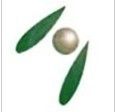Curcumin
Curcumin Specification
- Formulations Type
- Powder, Capsule, Tablet (on request)
- Moisture (%)
- <5%
- Solubility
- Soluble in ethanol, DMSO; slightly soluble in water
- Extract Type
- Solvent Extraction
- Capsule Type
- Vegetarian (available on request)
- Size
- Custom packaging available
- Additives
- No artificial additives
- Tablet/Capsule Size
- 500 mg / as specified
- Purity(%)
- 95% (Curcuminoids) approx.
- Density
- 0.60 Gram per cubic centimeter(g/cm3)
- Product Type
- Curcumin Powder
- Category
- Herbal Extract
- Usage
- Pharmaceuticals, Food additives, Dietary supplements, Cosmetics
- Ingredients
- Pure Curcuma longa (Turmeric) Extract
- Form
- Powder
- Grade
- Pharmaceutical Grade
- Direction
- As directed by physician or according to requirement
- Recommended For
- Joint health, Antioxidant support, General wellness
- Shelf Life
- 24 Months
- Storage Instructions
- Store in a cool, dry and dark place, away from moisture and direct sunlight
About Curcumin
Name:CurcuminSynonyms: 1,7-Bis(4-hydroxy-3-methoxyphenyl)-1,6-heptadiene-3,5-dione; C.I. 75300; C.I. Natural Yellow 3; Diferuloylmethane
Molecular Formula C21H20O6
Molecular Weight 368.38
CAS Registry Number; 458-37-7
EINECS: 207-280-5
Curcumin is the principal curcuminoid of the popular Indian spice turmeric, which is a member of the ginger family (Zingiberaceae). The other two curcuminoids are desmethoxycurcumin and bis-desmethoxycurcumin. The curcuminoids are polyphenols and are responsible for the yellow color of turmeric. Curcumin can exist in at least two tautomeric forms, keto and enol. The enol form is more energetically stable in the solid phase and in solution.
Curcumin can be used for boron quantification in the so-called curcumin method. It reacts with boric acid forming a red colored compound, known as rosocyanine.
Curcumin is brightly colored and may be used as a food coloring. As a food additive, its E number is E100.
Speciafication
Product name Curcumin
Molar mass 368.38 g/mol
Appearance Bright yellow-orange powder
Melting point 183 °C (361 K)
Density 0.93
Refractive index 1.4155-1.4175
Water solubility Slightly soluble (hot)

Tell us about your requirement

Price:
Quantity
Select Unit
- 50
- 100
- 200
- 250
- 500
- 1000+
Additional detail
Mobile number
Email
More Products in Herbal Active Ingredients Category
anthocyanidin
Grade : Pharmaceutical Grade
Category : Other , Herbal Extracts
Purity(%) : 99%
Shelf Life : 24 Months
Form : Powder
Additives : No additives
Magnolol
Grade : Pharmaceutical Grade
Category : Other , Herbal Extract
Purity(%) : 98% min
Shelf Life : 2 years
Form : Powder
Additives : None
Gesolgel BAK
Grade : Food grade
Category : Other , Food ingredients
Purity(%) : High purity
Shelf Life : 6 months
Form : Powder or gel, Other
Additives : Bakery additives
Stevioside(CAS No. 471-80-7),E960
Grade : Food Grade
Category : Other , Sweeteners
Purity(%) : >90%
Shelf Life : 2 years
Form : Powder
Additives : No additives
 |
A & Z Group Co.,Ltd
All Rights Reserved.(Terms of Use) Developed and Managed by Infocom Network Private Limited. |

 Send Inquiry
Send Inquiry






 Send Inquiry
Send Inquiry